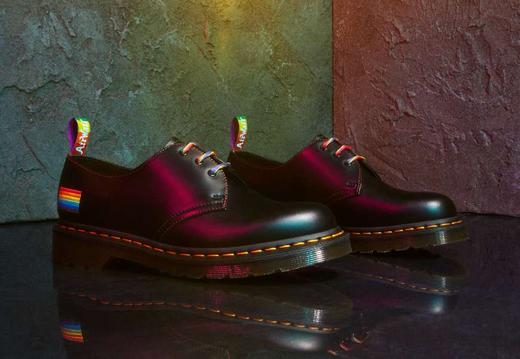SHOWING UP — FOR PRIDE. THEN. NOW. ALWAYS.
SHOWING UP — FOR PRIDE. THEN. NOW. ALWAYS.
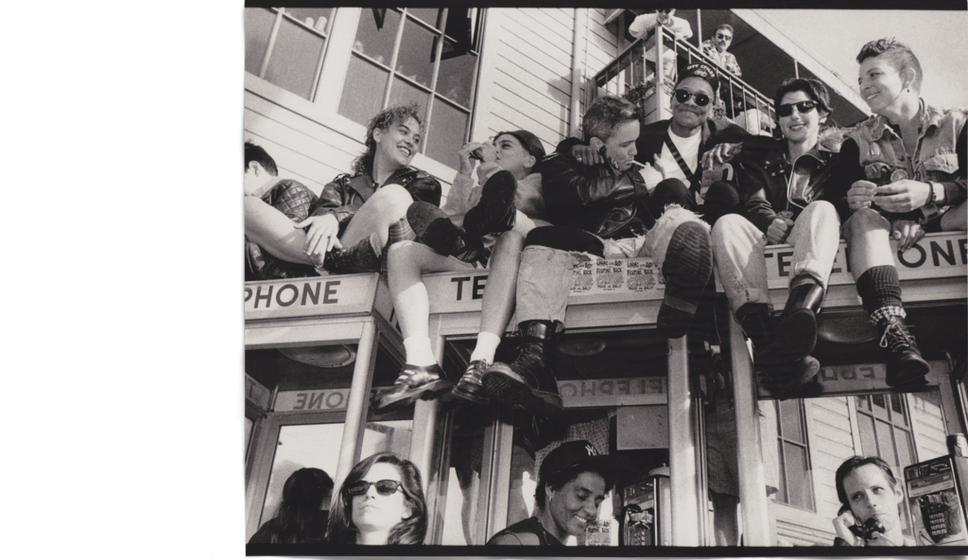
A Brief History of DM's Wearers and Queer Protest
WORDS BY AMELIA ABRAHAM (SHE/THEY)
As the ultimate protest footwear, Dr. Martens have played a part in the LGBTQ+ rights movement for five riotous decades. Adopted by global queer communities as a symbol for stomping all over the status quo. A deep dive into LGBTQ+ history shows DM’s footwear on the feet of queer activists at the forefront of protests fighting for the most marginalised in our community. Not to mention DM's presence as a staple of underground queer music scenes.
That 30% of Dr. Martens staff globally identify as LGBTQIA+ stands in testament to the role DM’s have been playing in the background of LGBTQIA+ progress, and that Dr. Martens stands for much more than just a fashion choice. From rainbow DM’s footwear at Pride to the tightly laced boots worn by leather communities, here’s to the next five decades of Dr. Martens standing in solidarity with queer communities everywhere and celebrating self expression.
PRIDE, SAN FRANCISCO, 1989 | PHOTOGRAPHER: PHYLLIS CHRISTOPHER
Legendary photographer Phyllis Christopher captured the lesbian scene and Gay Prides of San Francisco in the late 80s and early 90s, a city where LGBTQ+ people from all over America came to be free.

A Brief History of DM's Wearers and Queer Protest
WORDS BY AMELIA ABRAHAM (SHE/THEY)
As the ultimate protest footwear, Dr. Martens have played a part in the LGBTQ+ rights movement for five riotous decades. Adopted by global queer communities as a symbol for stomping all over the status quo. A deep dive into LGBTQ+ history shows DM’s footwear on the feet of queer activists at the forefront of protests fighting for the most marginalised in our community. Not to mention DM's presence as a staple of underground queer music scenes.
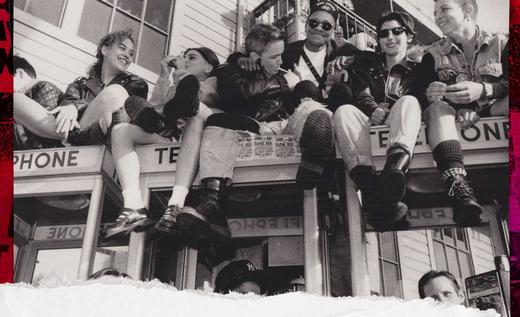
PRIDE, SAN FRANCISCO, 1989 | PHOTOGRAPHER: PHYLLIS CHRISTOPHER
Legendary photographer Phyllis Christopher captured the lesbian scene and Gay Prides of San Francisco in the late 80s and early 90s, a city where LGBTQ+ people from all over America came to be free.

That 30% of Dr. Martens staff globally identify as LGBTQIA+ stands in testament to the role DM’s have been playing in the background of LGBTQIA+ progress, and that Dr. Martens stands for much more than just a fashion choice. From rainbow DM’s footwear at Pride to the tightly laced boots worn by leather communities, here’s to the next five decades of Dr. Martens standing in solidarity with queer communities everywhere and celebrating self expression.
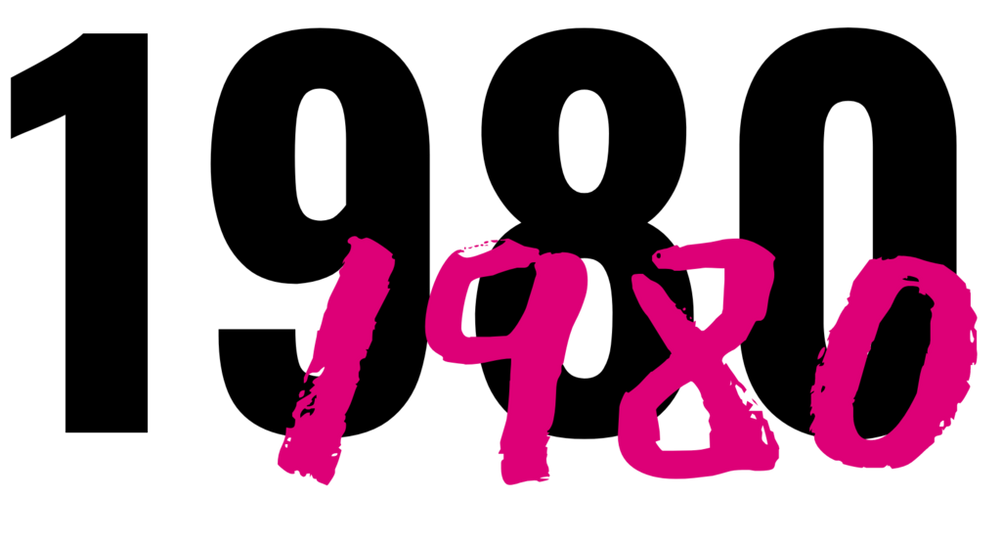
A hunt through the archives shows that DM’s boots and shoes first found their way onto the feet of LGBTQIA+ communities in the early 80s as Pride marches and protests grew in momentum across Britain. In 1981, DM's-clad protesters decamped from London to Huddersfield en masse, to join local queer communities facing clampdowns from the police.
Later that decade, members of AIDS activist group ACT UP can be seen holding protests in their DM’s boots on both sides of the Atlantic. Section 28, the UK law banning discussion of homosexuality in schools and local authorities, brought demonstrators out on the streets across the UK.
Meanwhile, the story of DM's intertwined with queer punk communities begins, as subcultures like the Rebel Dykes – lesbian squatters, artists and activists in London and Manchester – paired their Docs boots and shoes with leather jackets, shaved heads and mohawks.
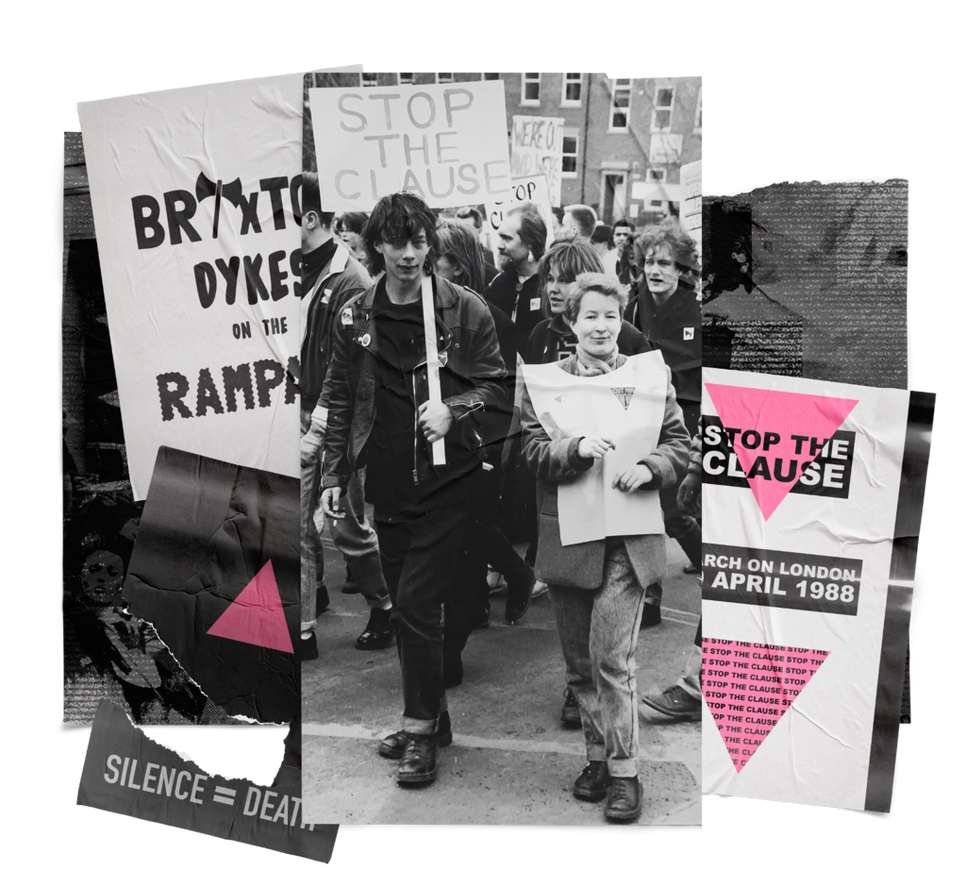

STOP SECTION 28, UK, 1988 | PHOTOGRAPHER: NIGEL HATTON
Margaret Thatcher’s Clause 28 became the notorious Section 28, an amendment to the Local Government Act, intended to silence any public discussion of homosexuality. Here, LGBTQIA+ rights and HIV activist Matthew Hodson protests the clause at a Stop the Clause march through the streets of Leeds in 1988 alongside other committed activists.
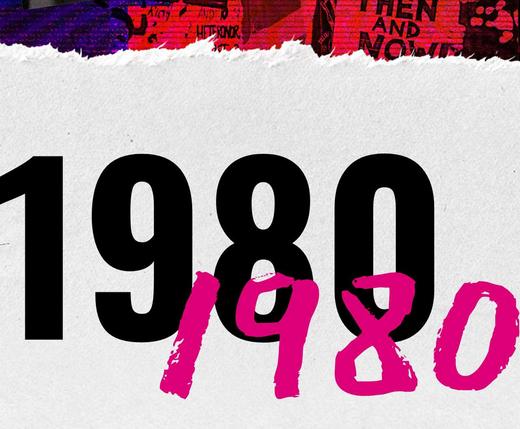
A hunt through the archives shows that DM’s boots and shoes first found their way onto the feet of LGBTQIA+ communities in the early 80s as Pride marches and protests grew in momentum across Britain. In 1981, DM's-clad protesters decamped from London to Huddersfield en masse, to join local queer communities facing clampdowns from the police.
Later that decade, members of AIDS activist group ACT UP can be seen holding protests in their DM’s boots on both sides of the Atlantic. Section 28, the UK law banning discussion of homosexuality in schools and local authorities, brought demonstrators out on the streets across the UK.
Meanwhile, the story of DM's intertwined with queer punk communities begins, as subcultures like the Rebel Dykes – lesbian squatters, artists and activists in London and Manchester – paired their Docs boots and shoes with leather jackets, shaved heads and mohawks.

STOP SECTION 28, UK, 1988 | PHOTOGRAPHER: NIGEL HATTON
Margaret Thatcher’s Clause 28 became the notorious Section 28, an amendment to the Local Government Act, intended to silence any public discussion of homosexuality. Here, LGBTQIA+ rights and HIV activist Matthew Hodson protests the clause at a Stop the Clause march through the streets of Leeds in 1988 alongside other committed activists.
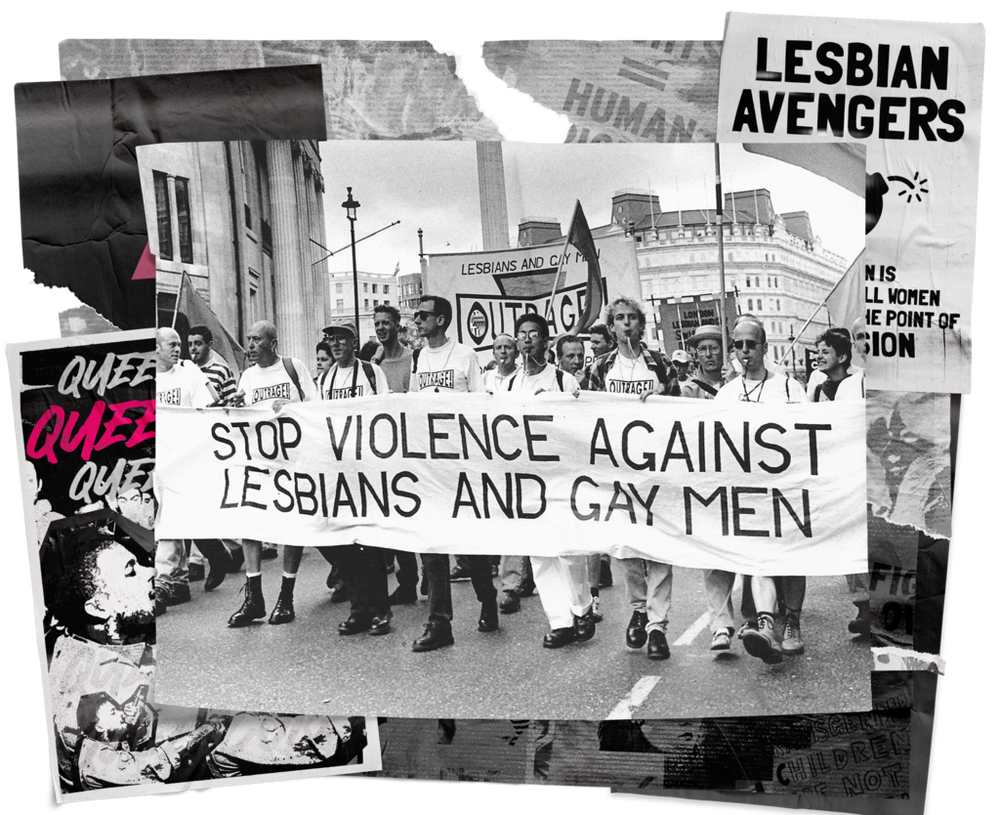
Over in the US, queer documentarians turned their lens on the communities at San Francisco Pride and the Dyke March, the lesbian protest movement that would soon go global. Amidst the ongoing AIDS crisis, these movements stood for resilience and defiance, and they did it in Dr. Martens boots.
Not only were Docs boots a favourite for taking to the streets in the 90s, but for storming the stage too, at queercore and homocore shows, where the radical politics of the queer movement intersected with punk rock.

OUTRAGE! PROTEST, LONDON, 1990 | PHOTOGRAPHER: STEPHEN MAYES
Formed in 1990 by activist Peter Tatchell and other prominent UK activists in response to the murder of gay actor Michael Boothe, the protest group OutRage! campaigned against homophobic violence and against the unjust policing of gay men. The group became known for civil disobedience, and were active for 20 years.
WATCH OUR VIDEOS ABOUT FOUND FAMILY DURING THE AIDS CRISIS
Over in the US, queer documentarians turned their lens on the communities at San Francisco Pride and the Dyke March, the lesbian protest movement that would soon go global. Amidst the ongoing AIDS crisis, these movements stood for resilience and defiance, and they did it in Dr. Martens boots.
Not only were Docs boots a favourite for taking to the streets in the 90s, but for storming the stage too, at queercore and homocore shows, where the radical politics of the queer movement intersected with punk rock.

OUTRAGE! PROTEST, LONDON, 1990 | PHOTOGRAPHER: STEPHEN MAYES
Formed in 1990 by activist Peter Tatchell and other prominent UK activists in response to the murder of gay actor Michael Boothe, the protest group OutRage! campaigned against homophobic violence and against the unjust policing of gay men. The group became known for civil disobedience, and were active for 20 years.
WATCH OUR VIDEOS ABOUT FOUND FAMILY DURING THE AIDS CRISIS

The 00s marked a new millennium for LGBTQIA+ progress, as rights like marriage and adoption became more widely discussed. Pride parades and protests continued to spread across the world to new countries in the 00s, their turn outs growing in number in key cities far beyond the US and Europe and breaking new attendance records with figures in the millions.
Later on in the 00s, queer bands like Tegan and Sara and Limp Wrist championed DM’s footwear in pop culture, while Docs boots and shoes could be found among queer communities like dykes on bikes, leather gays, and the Sisters of Perpetual Indulgence (an order of queer and trans people and drag queens).
The 00s marked a new millennium for LGBTQIA+ progress, as rights like marriage and adoption became more widely discussed. Pride parades and protests continued to spread across the world to new countries in the 00s, their turn outs growing in number in key cities far beyond the US and Europe and breaking new attendance records with figures in the millions.
Later on in the 00s, queer bands like Tegan and Sara and Limp Wrist championed DM’s footwear in pop culture, while Docs boots and shoes could be found among queer communities like dykes on bikes, leather gays, and the Sisters of Perpetual Indulgence (an order of queer and trans people and drag queens).
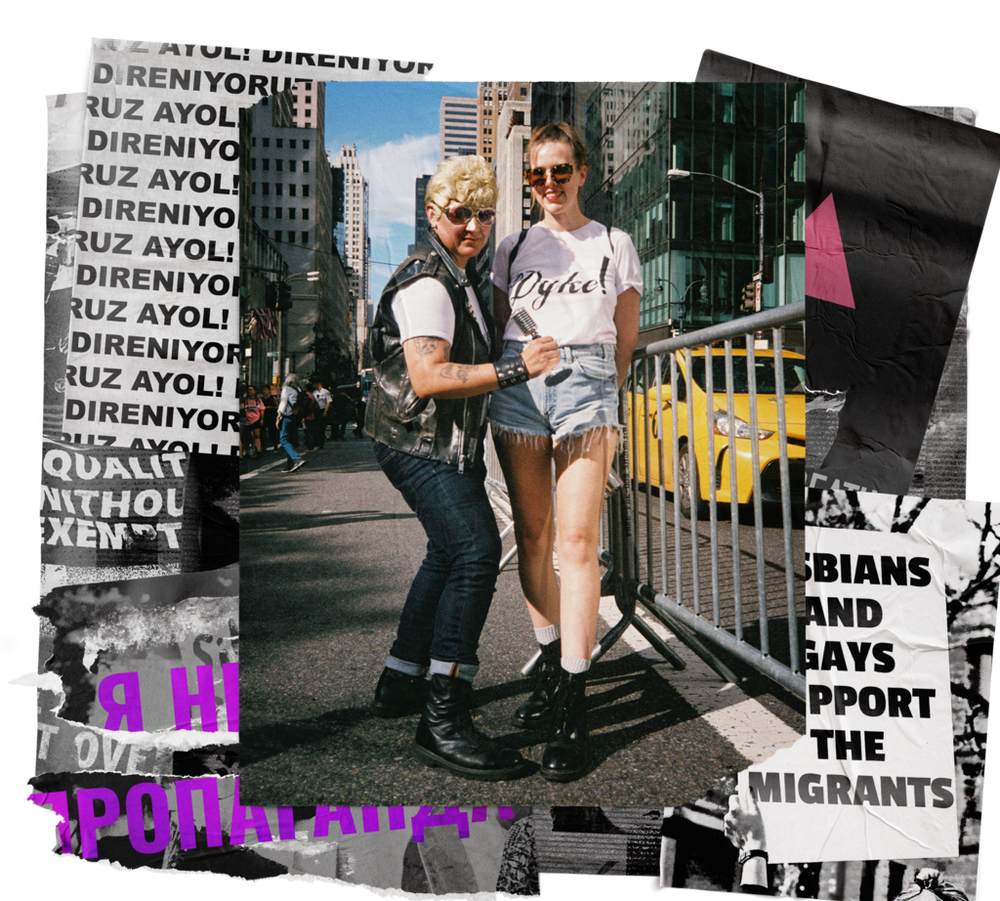

Government backlash towards growing LGBTQ+ visibility in the 10s in countries like Turkey and Russia were countered by defiant protesters, including Pussy Riot, who wore DM’s boots as they weaponised punk to fight the patriarchy.
In Western countries like the UK, the US, Australia and Germany, the fight for marriage equality continued while protesters questioned the growing commercialisation of Pride and police presence at the event by putting on their own, more grassroots Pride events – with Dr. Martens footwear often showing up in the photos.
Lesbians and Gays Support The Migrants were one such group, influenced by 80s movement Lesbians and Gays Support the Miners, this time calling on LGBTQIA+ people to stand in solidarity with migrants at flash protests around the UK.

DYKE MARCH, NYC, 2017 | PHOTOGRAPHER: Joseph Viola
Activist group the Lesbian Avengers founded Dyke March in New York City in 1993. The main purpose of a dyke march is to improve visibility for lesbians and other queer women. The event quickly spead to cities across the USA, Canada and Germany. Still going strong more than a decade after it was founded, Dyke Mark overtook NYC in 2017 with queer people of all ages lacing up their Dr. Martens boots and coming together in solidarity.
READ MORE ABOUT THE POWER OF PROTEST WITH ACTIVIST PETER TATCHELL

Government backlash towards growing LGBTQ+ visibility in the 10s in countries like Turkey and Russia were countered by defiant protesters, including Pussy Riot, who wore DM’s boots as they weaponised punk to fight the patriarchy.
In Western countries like the UK, the US, Australia and Germany, the fight for marriage equality continued while protesters questioned the growing commercialisation of Pride and police presence at the event by putting on their own, more grassroots Pride events – with Dr. Martens footwear often showing up in the photos.
Lesbians and Gays Support The Migrants were one such group, influenced by 80s movement Lesbians and Gays Support the Miners, this time calling on LGBTQIA+ people to stand in solidarity with migrants at flash protests around the UK.

DYKE MARCH, NYC, 2017 | PHOTOGRAPHER: Joseph Viola
Activist group the Lesbian Avengers founded Dyke March in New York City in 1993. The main purpose of a dyke march is to improve visibility for lesbians and other queer women. The event quickly spead to cities across the USA, Canada and Germany. Still going strong more than a decade after it was founded, Dyke Mark overtook NYC in 2017 with queer people of all ages lacing up their Dr. Martens boots and coming together in solidarity.

With intersectionality at the foreground, groups like London Trans Pride, founded in 2019 pushed the grassroots spirit of 20s queer movements forward as a space for trans, intersex and nonbinary people to come together and demand their safety and recognition.
In 2020, when global Black Lives Matter protests swept the world, protests sprung up in London, Brooklyn and beyond. Their calls to end violence against trans people of colour reverberate into 2023, as we continue to collectively battle this urgent frontier in the ongoing fight for LGBTQIA+ rights, safety and happiness globally.
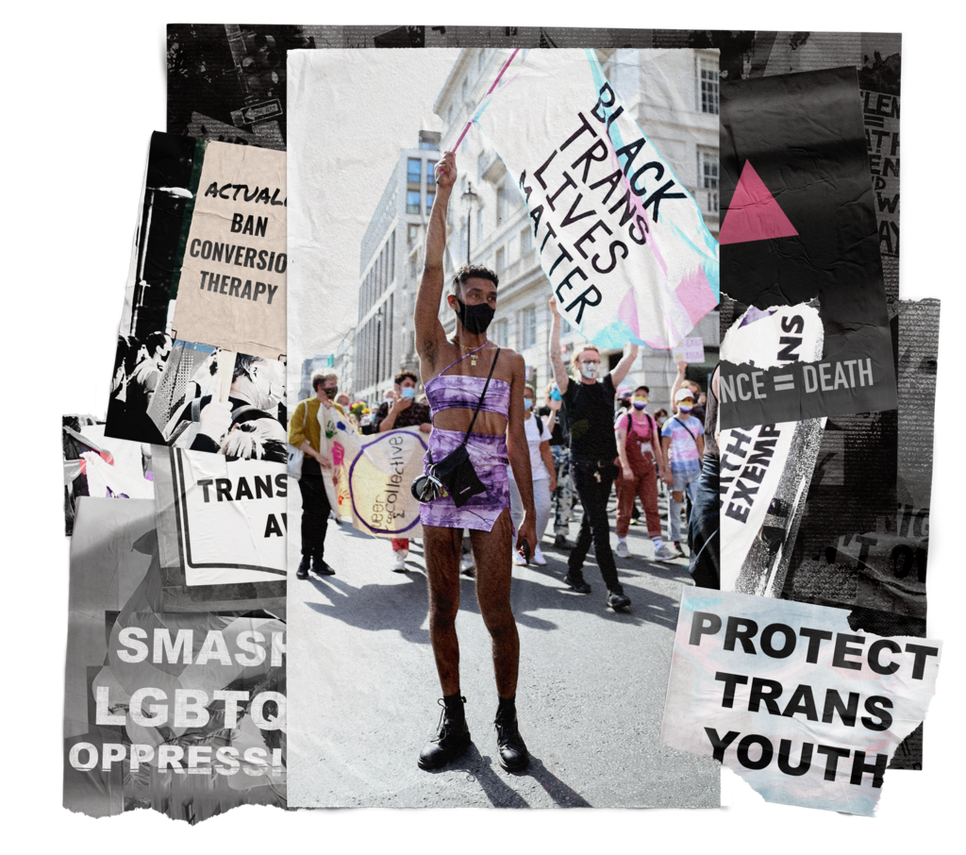

TRANS PRIDE, LONDON, 2021 | PHOTOGRAPHER: BEX WADE
London Trans Pride was founded in 2019 after an anti-trans group protested against the inclusion of trans people at Pride. A dedicated grassroots demonstration for trans, nonbinary and intersex people’s rights, London Trans Pride protesters march through central London in their thousands, gathering in Soho Square for speeches and celebration.

If you recognise yourself in any of the images above and would like to reach out, please contact us at [email protected]
READ MORE ABOUT THE POWER OF PROTEST WITH ACTIVIST PETER TATCHELL

With intersectionality at the foreground, groups like London Trans Pride, founded in 2019 pushed the grassroots spirit of 20s queer movements forward as a space for trans, intersex and nonbinary people to come together and demand their safety and recognition.
In 2020, when global Black Lives Matter protests swept the world, protests sprung up in London, Brooklyn and beyond. Their calls to end violence against trans people of colour reverberate into 2023, as we continue to collectively battle this urgent frontier in the ongoing fight for LGBTQIA+ rights, safety and happiness globally.
If you recognise yourself in any of the images above and would like to reach out, please contact us at [email protected]
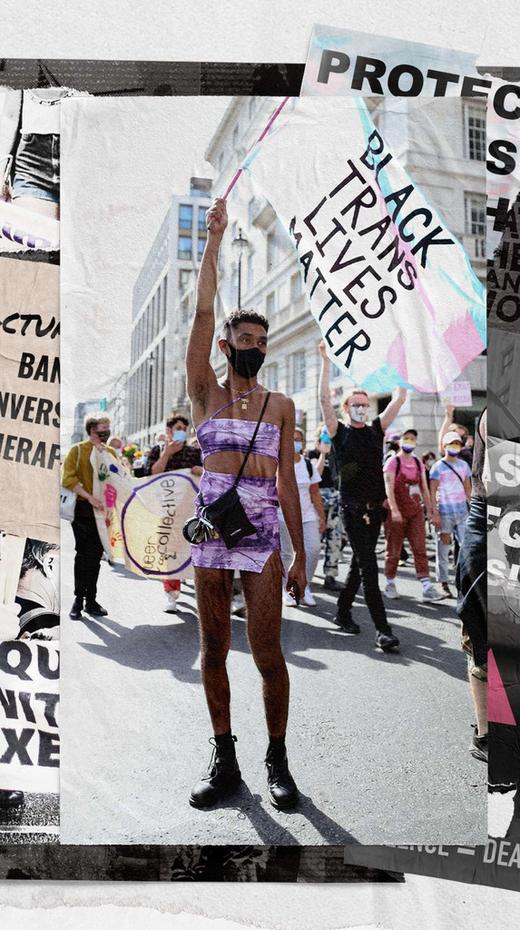
TRANS PRIDE, LONDON, 2021 | PHOTOGRAPHER: BEX WADE
London Trans Pride was founded in 2019 after an anti-trans group protested against the inclusion of trans people at Pride. A dedicated grassroots demonstration for trans, nonbinary and intersex people’s rights, London Trans Pride protesters march through central London in their thousands, gathering in Soho Square for speeches and celebration.

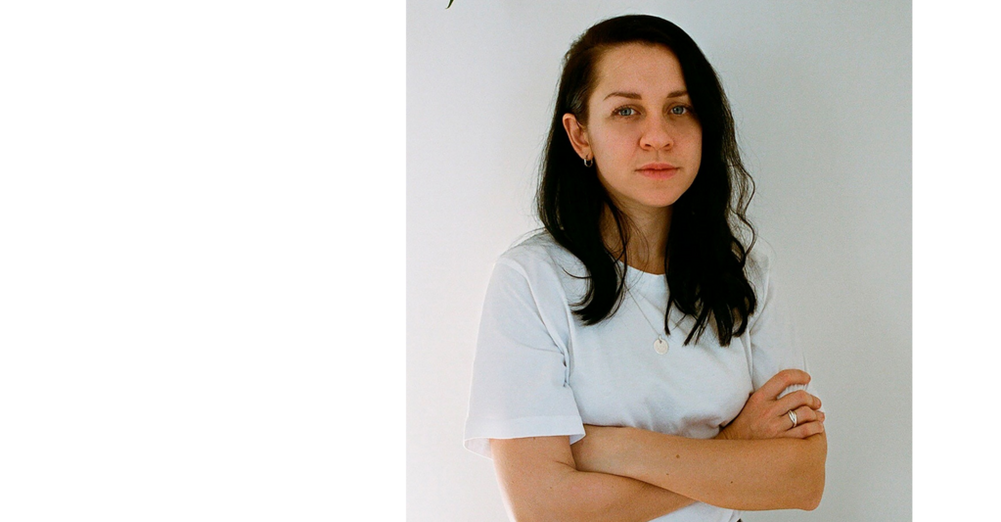
ABOUT: AMELIA ABRAHAM
As a journalist and author, Amelia has written for The Guardian, Observer, Sunday Times, ES Magazine, British Vogue and American Vogue, and has previously worked as a commissioning editor at VICE, Refinery29 and Dazed Media.
Amelia has also written two books: Queer Intentions: A (Personal) Journey Through LGBTQ+ Culture (Picador, 2019) and We Can Do Better Than This Vintage, 2021) which speaks on LGBTQ+ rights and diversity in the media, for cultural institutions and within brands and organisations.


ABOUT: AMELIA ABRAHAM
As a journalist and author, Amelia has written for The Guardian, Observer, Sunday Times, ES Magazine, British Vogue and American Vogue, and has previously worked as a commissioning editor at VICE, Refinery29 and Dazed Media.
Amelia has also written two books: Queer Intentions: A (Personal) Journey Through LGBTQ+ Culture (Picador, 2019) and We Can Do Better Than This Vintage, 2021) which speaks on LGBTQ+ rights and diversity in the media, for cultural institutions and within brands and organisations.
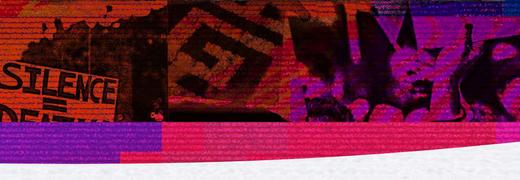

THE POWER OF PROTEST
Lifelong LGBTQIA+ activist Peter Tatchell shared with us his most notable uses of protest in the ongoing fight for queer equality and liberation.

LEARNING FROM OUR ELDERS
UK Black Pride co-founder Lady Phyll tells us she how was inspired by poet and activist Audre Lorde.

THE PROGRESS PRIDE FLAG
Docs sat down with multi-talented graphic designer and Portland native Daniel Quasar who created the Progress Pride Flag.

THE TALKING TOUGH PODCAST
Shining the spotlight on those who have overcome adversity and carved their own path. New episodes released every Friday.

THE DM’S PRIDE PLAYLIST
Celebrating Pride. Check out our Spotify playlist of LGBTQIA+ anthems and classics – the old and the new.

BODY MOVEMENTS FESTIVAL
East London's first LGBTQIA+ dance festival descended for two days of unrestricted queer self-expression, community talks and creative freedom.
